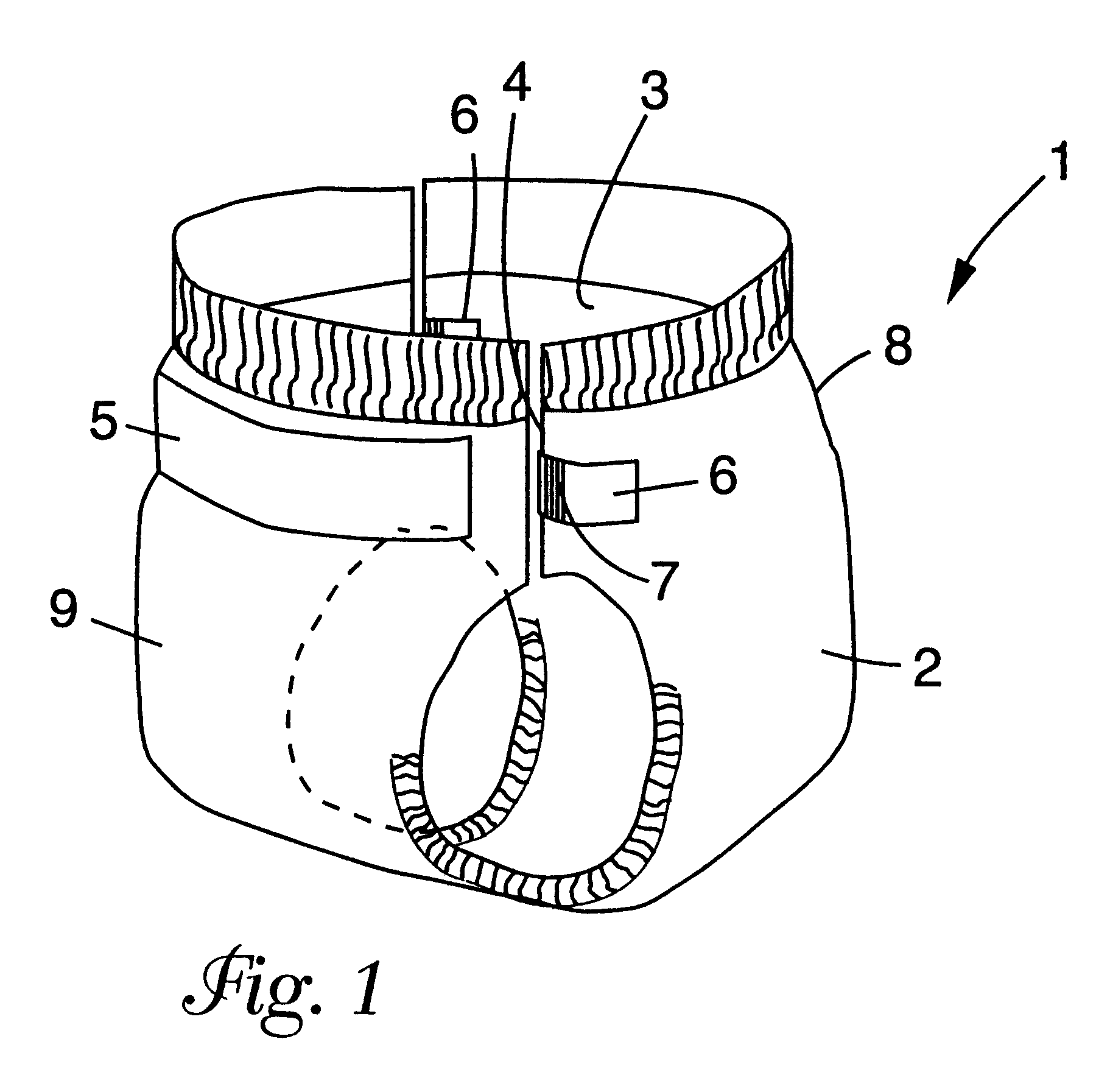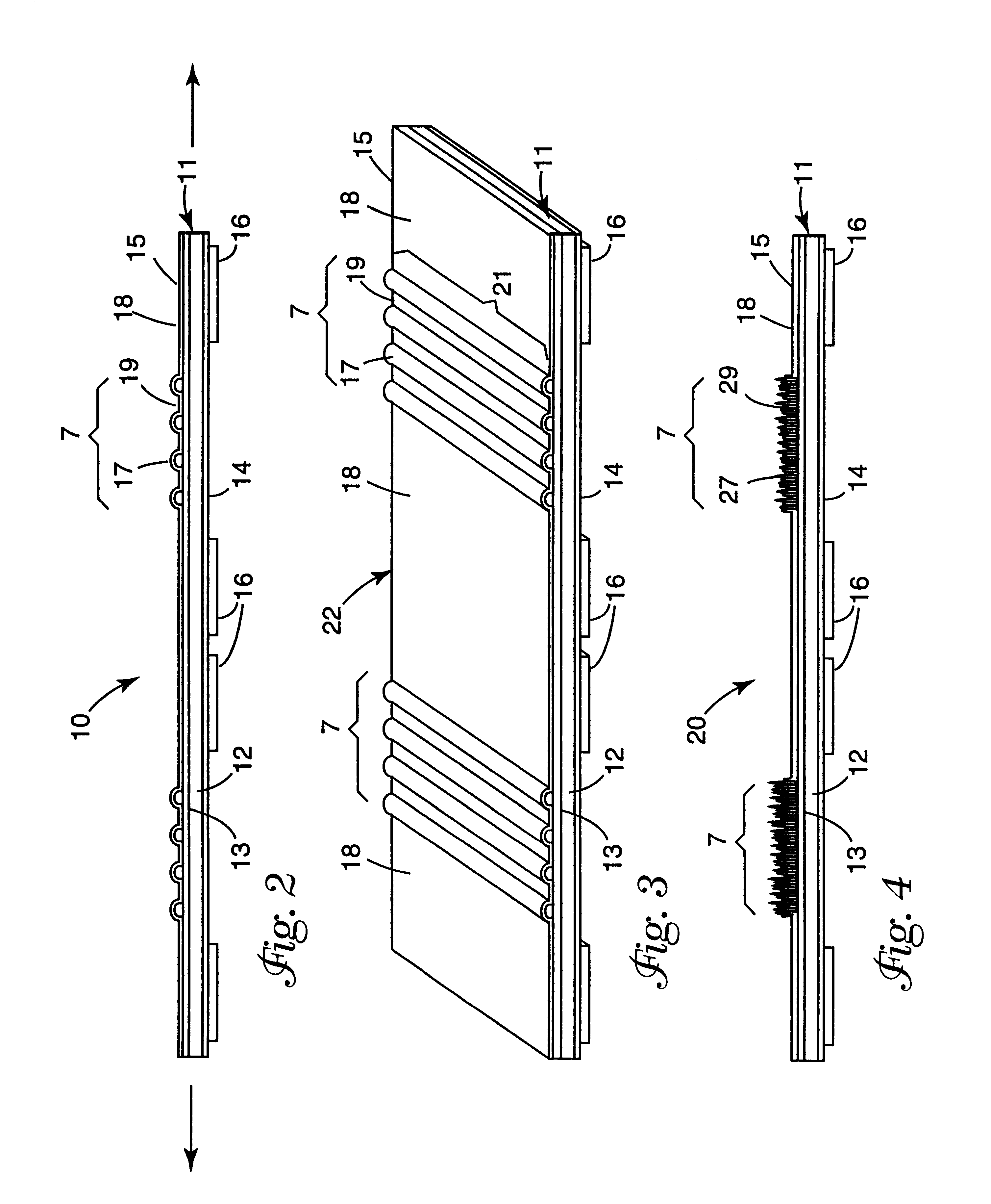Elastic tab laminate
a technology of elastic tabs and laminates, applied in the field of elastic tabs, can solve the problems of unsatisfactory materials, unpredictable use performance of elastic tabs, and the same problems
- Summary
- Abstract
- Description
- Claims
- Application Information
AI Technical Summary
Benefits of technology
Problems solved by technology
Method used
Image
Examples
Embodiment Construction
A zone corrugated nonwoven / elastic film laminate was prepared using a thermal bonding process. Film sample 20, described in Table 1, was laminated to a 34 grams / meter.sup.2 polypropylene spunbond nonwoven manufactured by Avgol Ltd Nonwoven Industries of Holon, Israel (distributed by John Cleaver & Assoc. Wayne, Pa.). The nonwoven was corrugated in-line immediately prior to lamination in a nip formed by upper (116.degree. C.) and lower (149.degree. C.) corrugating steel rolls machined with circumferential ridges spaced across the roll face. The ridges were spaced to provide 2.54 cm wide zones of corrugated nonwoven separated by 5.08 cm wide zones of non-corrugated nonwoven. The corrugating rolls were set such that the circumferential ridges of the upper roll intermeshed with the circumferential ridges of the lower roll. The amount of intermeshing was adjusted as to provide nonwoven loops with about 100% available elongation. The corrugated nonwoven and film sample 20 were fed into a ...
PUM
| Property | Measurement | Unit |
|---|---|---|
| thickness | aaaaa | aaaaa |
| width | aaaaa | aaaaa |
| elongation | aaaaa | aaaaa |
Abstract
Description
Claims
Application Information
 Login to View More
Login to View More - R&D
- Intellectual Property
- Life Sciences
- Materials
- Tech Scout
- Unparalleled Data Quality
- Higher Quality Content
- 60% Fewer Hallucinations
Browse by: Latest US Patents, China's latest patents, Technical Efficacy Thesaurus, Application Domain, Technology Topic, Popular Technical Reports.
© 2025 PatSnap. All rights reserved.Legal|Privacy policy|Modern Slavery Act Transparency Statement|Sitemap|About US| Contact US: help@patsnap.com



